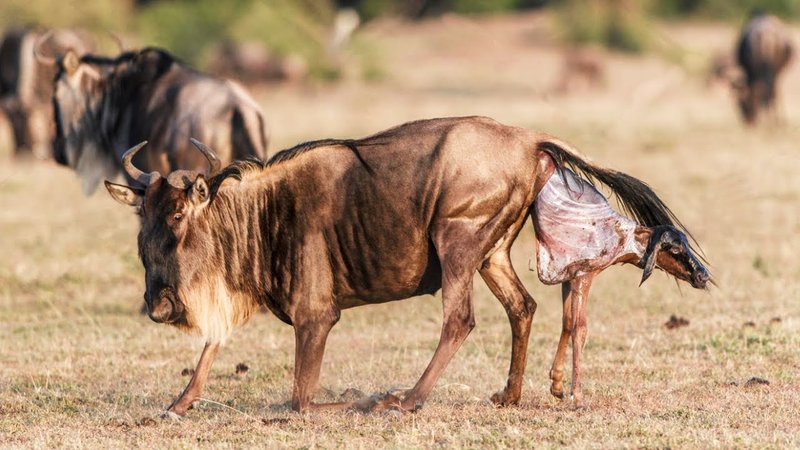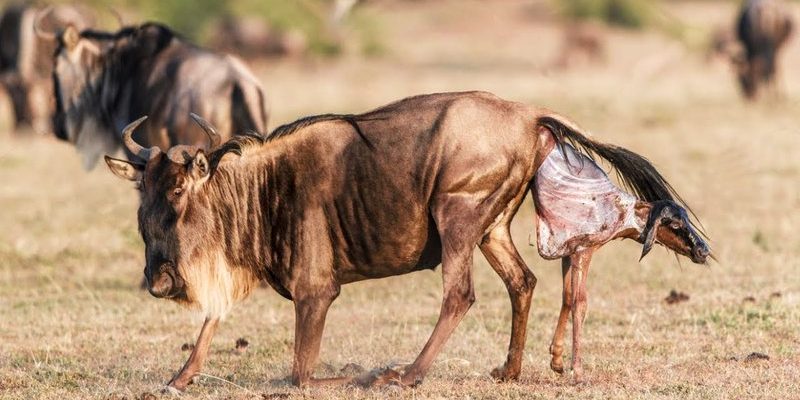
You might be surprised to find out just how involved wildebeest mothers are when raising their calves. They demonstrate a mix of resilience and tenderness that helps ensure the survival of their young in a world filled with predators and harsh conditions. So, let’s dive into this incredible journey of parenthood among wildebeests.
The Importance of Timing: Calving Season
Wildebeests have a specific season for calving, which usually occurs during the spring months. This timing is essential because it aligns with the availability of fresh grasses in the savanna. When the rains start, the landscape transforms into a lush buffet, providing plenty of nutrients for the pregnant wildebeests and their newborns.
During the calving season, these animals gather in large herds, which can number in the thousands. This helps create a protective environment for the vulnerable calves. It’s a bit like a community coming together to watch out for each other; while some mothers are busy giving birth, others keep an eye out for predators lurking nearby. This collective effort is key to raising healthy young.
Each mother typically gives birth to one calf at a time, although twins can happen, but that’s quite rare. After about eight months of gestation, the mother finds a safe, sheltered spot to give birth. It’s a critical moment for both mother and calf, as they need to establish a bond quickly.
Calf Survival: The First Days
Once a calf is born, it’s almost like an instant race against time. Calves are surprisingly nimble right after birth; they can stand up and walk within just a few hours. This ability is crucial because it allows them to join the herd and stay safe from predators.
The mother wildebeest plays an important role during these early days. She is very protective and will keep her calf close, often hiding it in tall grass when danger approaches. That’s where her instincts come in handy. If she senses a threat, she’ll lead the calf away, proving how deeply she cares for her young.
Interestingly, calves recognize their mother’s scent and call from just a few hours old. This connection is vital for calf survival, ensuring that they can quickly locate their mother in the vast savanna. Can you imagine the relief they must feel upon finding each other amidst a sea of similar-looking wildebeests?
Mother’s Milk: A Nutritional Powerhouse
Just like human babies, wildebeest calves depend on their mother’s milk for sustenance. Wildebeest milk is rich in fat and protein, which helps the calves grow strong and healthy. During the first few months, the calf will feed several times a day. This frequent nursing not only provides nutrition but also strengthens the bond between mother and calf.
Calves often stay close to their mothers, learning important survival skills as they grow. These skills include how to graze on grasses and remain vigilant against predators. Mothers will also teach their young how to navigate the expansive savanna, which is crucial in a world where danger can be lurking at every turn.
Here’s the thing—while milk is a key part of their diet, it won’t last forever. As the calf approaches three months old, it begins to eat grass, gradually transitioning from a milk-dependent diet. This process is essential as it prepares them for life as adults.
Life in the Herd: Social Learning
Wildebeests are social animals, living in herds that can vary in size and composition. This social structure plays a significant role in raising calves. Young wildebeests learn from their mothers and other herd members, mimicking behaviors and learning how to interact within the group.
You might be wondering how this social learning impacts their survival. Well, it helps calves develop critical skills faster. For example, they observe how adults respond to dangers, like spotting predators or finding food. This collective learning environment boosts their chances of survival in the wild.
Additionally, the herd provides a layer of defense against predators. If a lion or hyena appears, the noise of a panicked herd can confuse the predator, often allowing calves and their mothers to escape. So, in a way, the herd acts like a shield, protecting the young while they learn and grow.
The Role of Fathers: A Silent Guardian
While wildebeest mothers are very hands-on, the role of fathers is more subtle. Male wildebeests, or bulls, don’t typically participate in raising the calves. Instead, their job mainly revolves around protecting the herd and establishing dominance within their group.
You might notice that during the calving season, male wildebeests often keep to the fringes of the herd. They engage in behaviors to ensure the safety of females and newborns, sometimes engaging in battles with other males to secure their place and the health of the group. This indirect protection is crucial, as it allows mothers to focus on nurturing their young without constant stress about threats.
It’s fascinating to think about how both males and females contribute to the upbringing of calves, each in their own way. Together, they create a balance that helps ensure the survival of the next generation in the wild.
Challenges in the Wilderness: Facing Predators
Even with all these instincts, the life of a young wildebeest is fraught with challenges. Predators such as lions, hyenas, and crocodiles are always on the lookout for easy prey. For a young calf, the world can be a dangerous place.
One of the most critical survival strategies for calves is speed. Wildebeests are known for their quick bursts of speed, which they often need when a predator is near. Mothers will even teach their calves how to run and evade capture.
Despite these strategies, many calves don’t make it past their first year. Experts estimate that only about 50% survive their first few months. This might seem harsh, but it’s a natural part of the cycle of life in the wild, where only the fittest survive. The bond between mother and calf is significant during this time, providing not just protection, but also comfort as they face these tough realities together.
Maturing into Adulthood: Preparing for Independence
As the months pass and calves grow, they begin to gain independence. By about six months old, they start to wander further from their mothers, testing their limits and learning how to fend for themselves. It’s a bittersweet transition; while mothers may feel pride watching their young grow, they also know that soon, they’ll be fully independent.
During this time, the learning curve is steep. Young wildebeests need to master grazing techniques, recognize different plants, and understand their habitat. They also learn social behaviors that will help them interact with other herd members, important for forming friendships and alliances in the future.
As calves grow into young adults, they will eventually leave their mothers to join other groups or even start their own herds. It’s a natural part of their life cycle, and it helps maintain genetic diversity within the population.
Watching a wildebeest mother raise her calf is a profound reminder of the complexities of life in the wild. From the tender moments of feeding and protection to the harsh realities of survival, every aspect is a part of an incredible journey.
Ultimately, raising young is a challenge faced by many animals, but the wildebeest’s unique strategies are a testament to nature’s resilience. They embody the balance of vulnerability and strength, showcasing how parental instincts are essential for the survival of a species. Each calf that grows healthy and strong is a step towards ensuring that these magnificent creatures continue to roam the savanna for generations to come.

